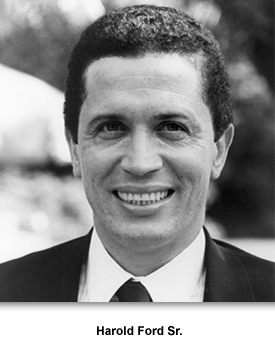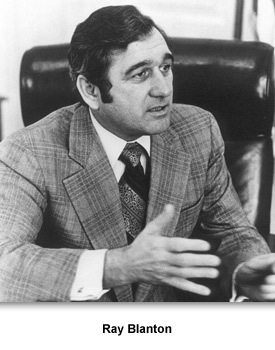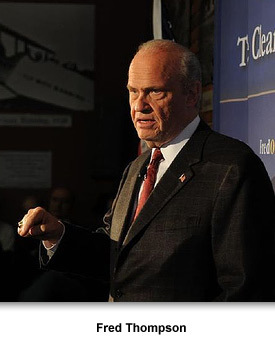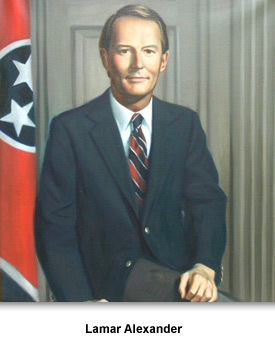Information Revolution
State Politics
During these years, politics in Tennessee became more inclusive. Increasing numbers of African American men and women and white women ran for political offices.
In Memphis, the Ford family had been active in local politics. Harold Ford, Sr., was the child of a successful funeral parlor owner. He served in the Tennessee House of Representatives from 1970-1975. In 1974 Ford was elected to the U.S. House of Representatives and served until 1996, when he was succeeded by his son, Harold E. Ford, Jr.
Ford’s election was a watershed moment in political and racial history of Tennessee. One historian said that Harold Ford, Sr.’s election to a term in the House (and to ten subsequent terms) was the most visible achievement by an African American political leader in Tennessee during the 1970s. During his time in Congress, he was known for careful attention to the needs of the people who lived in his district.
During this era, not all Tennessee politicians maintained the high moral standards expected of them. The political career of Ray Blanton, governor of the state from 1975-1979, ended in disgrace. A politician from West Tennessee, Blanton became involved in a scandal involving the alleged sale of pardons.
On December 15, 1978, shortly before Blanton was to leave office in January 1979, the FBI swarmed over Tennessee’s capitol and seized the office of Blanton’s legal advisor, T. Edward Sisk, on suspicion of a cash-for-clemency racket. They arrested three state employees, including Sisk.
Blanton had to appear before a federal grand jury on December 23, 1978, where he denied any wrong doing. Then Blanton pardoned 52 prisoners, including a political supporter’s son who been sentenced to prison for murdering two people. When state legislative leaders heard that Blanton was planning on issuing more pardons, they arranged for Governor-elect Lamar Alexander to privately take the oath of office three days early. (Read more about Blanton getting removed from office early.)
Blanton’s efforts on behalf of tourism and economic development, as well as state retirement security, contributed enormously to the general prosperity of the state. Nevertheless, the scandals eventually overwhelmed his reputation.
Lamar Alexander was from East Tennessee and a graduate of Vanderbilt University and New York University Law School. He became one of Tennessee’s most popular and charismatic politicians.
During his early career, Alexander served in jobs working with the Nixon White House, Senator Howard Baker, and the campaign of Governor Winfield Dunn. Alexander was elected governor in 1978 and served two consecutive terms.
Thousands of new jobs were created during Alexander’s term, including the opening of the Nissan plant in Smyrna, and the announcement of a new Saturn plant in Spring Hill. Alexander also introduced a system to improve research and public service at the state’s universities.
After leaving office, Alexander held positions as the president of the University of Tennessee and Secretary of Education under President George H.W. Bush. Alexander also ran for president in 1996, but dropped out of the race. He became a United States Senator in 2003 and is now the state’s senior senator.
Fred Thompson was another Tennessean who was an important political leader during this time. Thompson trained as a lawyer, but he has served in numerous acting and political roles. He worked for Senator Howard Baker and served as the minority counsel of the Senate Select Committee on Presidential Campaign Activity (Watergate Committee).
Thompson ran for the vacated senate seat of the new Vice President Al Gore in 1994 and won. He served the last two years of Gore’s term and was then elected to a full term in 1996. He left office in 2003 to concentrate on other endeavors. Thompson established a committee to explore running for president in 2008, but dropped out of the race.
When Congressman Harold Ford, Sr., decided that he would not seek reelection, his son,
Harold Ford Jr . ran for the office. The younger Ford easily won the primary and general election. In the coming years, Ford, Jr., would become a nationally known figure and a leading voice of conservative Democrats in the South and Washington, D.C. Ford left his congressional seat to run for U.S. senator in 2006, but lost to Republican Bob Corker. Ford has since been a political commentator on national news programs.
Harold Ford Jr . ran for the office. The younger Ford easily won the primary and general election. In the coming years, Ford, Jr., would become a nationally known figure and a leading voice of conservative Democrats in the South and Washington, D.C. Ford left his congressional seat to run for U.S. senator in 2006, but lost to Republican Bob Corker. Ford has since been a political commentator on national news programs.
James Sasser was born in Memphis and received both his undergraduate and law degrees from Vanderbilt University. He was active in the Democratic Party and served as chairman of the state party from 1973 to 1976. He successfully ran for U.S. senator in 1976 and was twice reelected, serving for 18 years. During his time in the Senate, he served as chairman of the powerful Senate Budget Committee from 1989 to 1995, laying the groundwork for the balanced budget of the late 1990s during the Clinton presidency.
After his defeat to Republican Bill Frist, Sasser was named the U.S. ambassador to the People’s Republic of China in 1995 and served until 1999. While ambassador, Sasser was trapped in the embassy for four days in 1999 by an anti-American mob. The Chinese were upset that an American airplane had accidently bombed the Chinese embassy in Belgrade, Yugoslavia, killing three Chinese journalists.
Ned McWherter, “a folksy” conservative Democrat from Weakley County in West Tennessee, served as governor from 1987 to 1995. A skillful politician, McWherter was known for his balanced approach to politics. He served as the Speaker of the Tennessee House of Representatives from 1973 to 1987.
McWherter tried to establish fiscal conservatism and bipartisan cooperation on budgetary and policy matters. McWherter also implemented the health care program known as TennCare. It was designed to provide health care for needy citizens at a reasonable cost.
Following McWherter was Tennessee Congressman Don Sundquist, a Republican from Memphis. Sundquist had served in Congress as a U.S representative for 12 years. Sundquist favored welfare reform, tax reform, and governmental efficiency. He also pushed through a law enforcement bill that had tougher sentences and focused on domestic violence and victims’ rights. Sundquist easily won reelection to a second term.
In 2000 he proposed a state income tax, a proposal violently opposed by his own party. Sundquist had an uneasy relationship with the state legislature that affected his ability to achieve his goals. The proposal for an income tax failed. Dig Deeper: Why did Governor Sundquist want to pass an income tax?
The governor’s office went back to the Democrats when Phil Bredesen won in 2002. Bredesen, a former businessman and mayor of Nashville, inherited the state’s fiscal crisis left from his predecessor’s failed attempt to pass an income tax. By cutting budgets and managing funds, Bredesen was able to restore fiscal balance in the state’s financial system.
One of Bredesen’s priorities was education. He raised teacher’s pay and expanded the state’s pre-K program. The governor also founded the Heritage Conservation Trust Fund to raise private funds so the state could buy more land for state parks and reserves.
Picture Credits:
- A photograph of the top of the Tennessee State Capitol flying (in order) the U.S. flag, the state flag, and a flag representing the Tennessee General Assembly. The assembly flag only flies when the legislature is in session. Photograph by Ricky Rogers, taken March 2000. Courtesy of The Tennessean
- Photograph of Harold Ford, Sr. Office of the Clerk, United States House of Representatives
- Pop-up photograph of Harold Ford, Jr. Office of the Clerk, United States House of Representatives
- Photograph of Ray Blanton. This photo was taken in 1976 and shows Blanton seated in his office. Tennessee State Library and Archives
- Painting of Lamar Alexander. This painting was created in 1980 by John W. Kelley. Tennessee State Museum Collection, 80.186
- Photograph of Fred Thompson. This photo was taken on December 30, 2007, and was provided by a group of Thompson supporters and photographers called “freddthompson.” It shows Thompson speaking at a campaign event in Iowa for the 2008 presidential election. Flickr.com
- Photograph of Jim Sasser. This photo was taken on May 10, 1999 in Beijing, China. It shows Sasser peering through a heavily damaged door at the U.S. embassy building. Photo by H.B. Hayes, Courtesy of Jim Sasser.
- Painting of Ned McWherter. This painting was created in 1994 by Marion Ward. Tennessee State Museum Collection, 94.111
- Painting of Don Sunquist. This painting was created in 2002 by Tom Donahue. Tennessee State Museum Collection, 2003.7
- Photograph of Governor Phil Bredesen. This photo was taken on January 28, 2008. It shows the governor delivering the State of the State Address to the Tennessee General Assembly. Governor’s Office, State of Tennessee.
Information Revolution >> Information Age >> Politics >> State Politics









 Sponsored by: National Endowment for the Humanities
Sponsored by: National Endowment for the Humanities